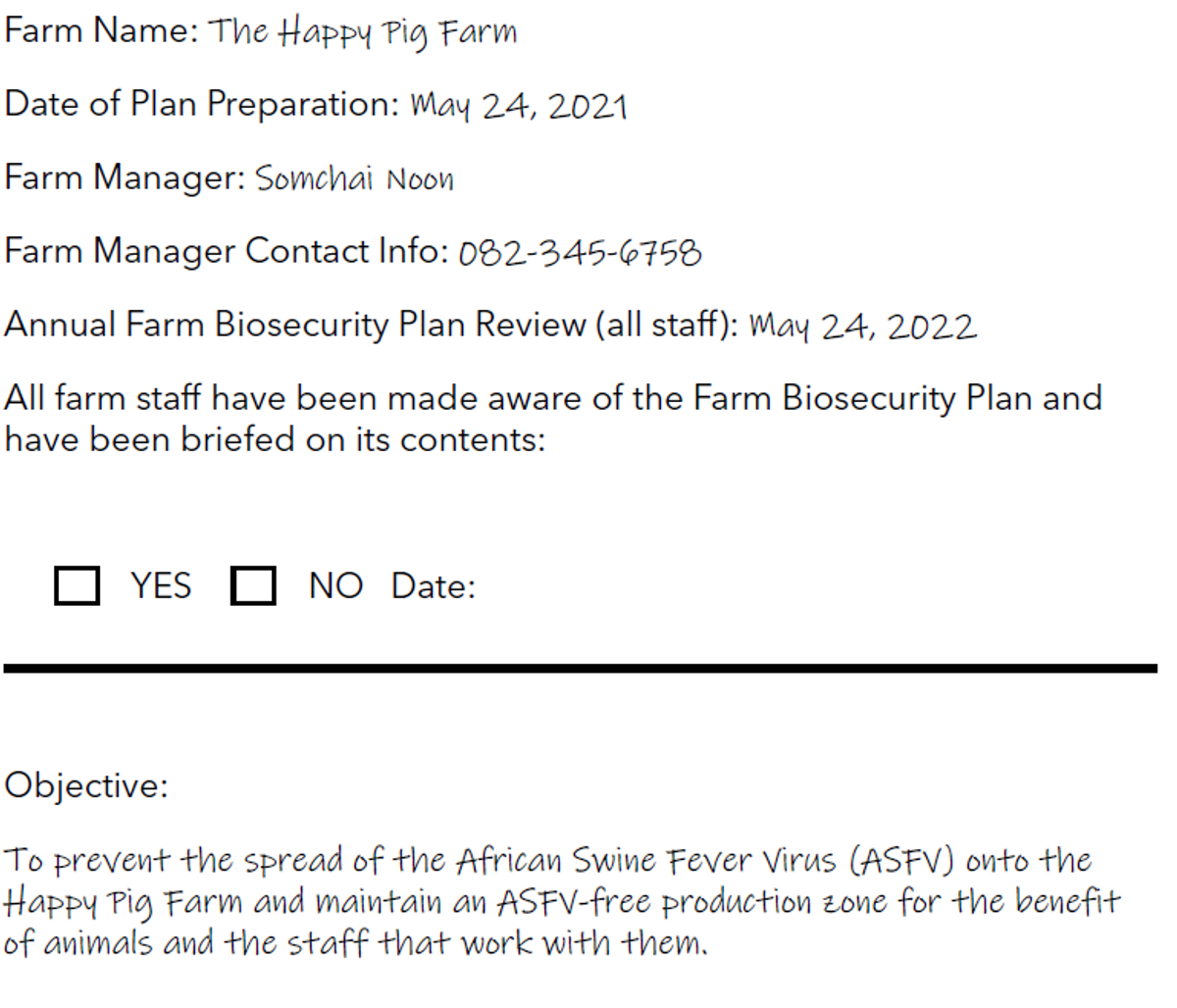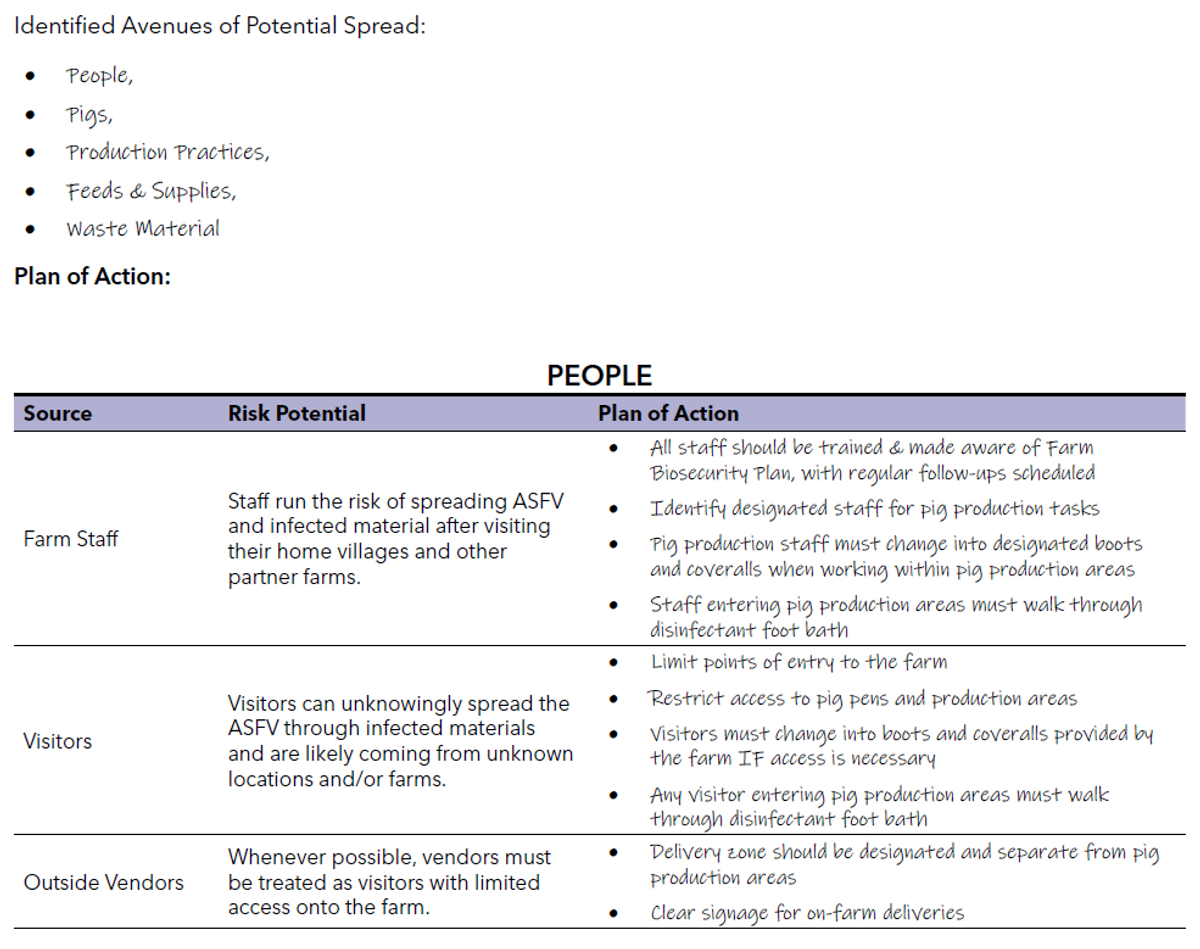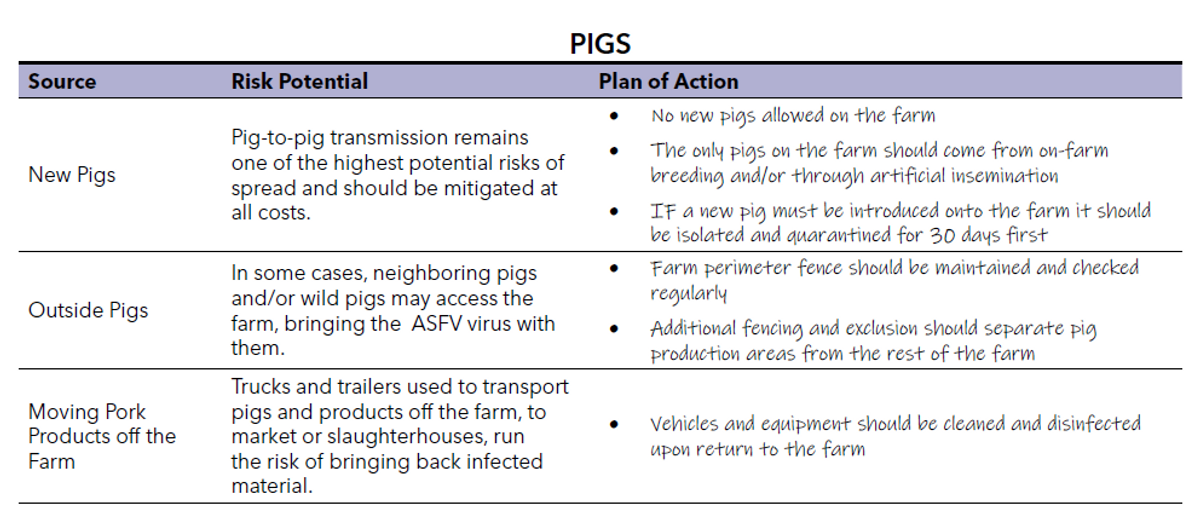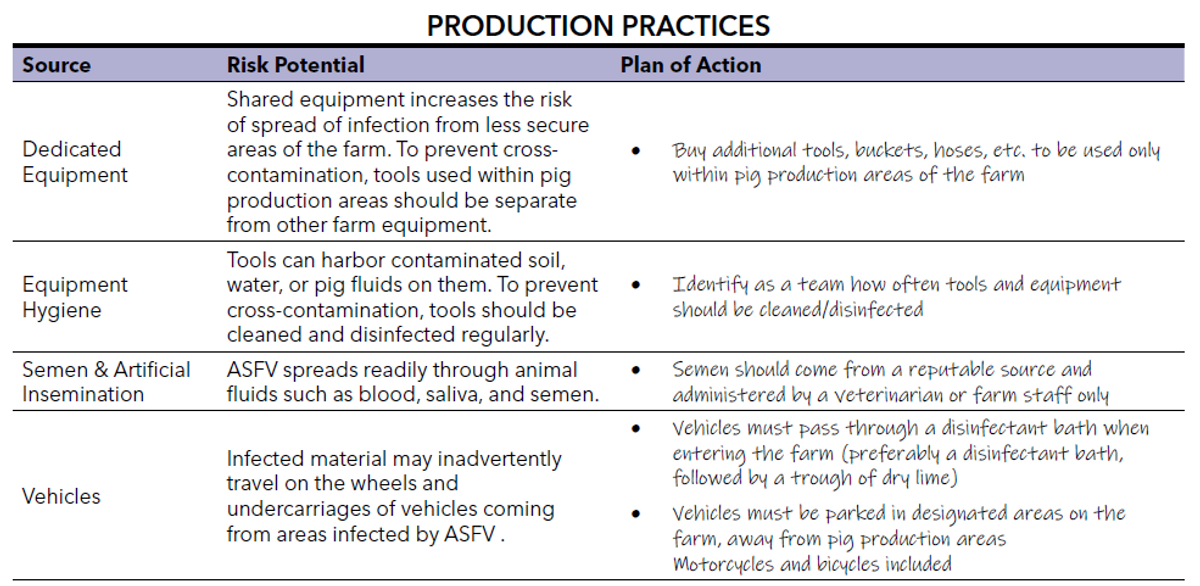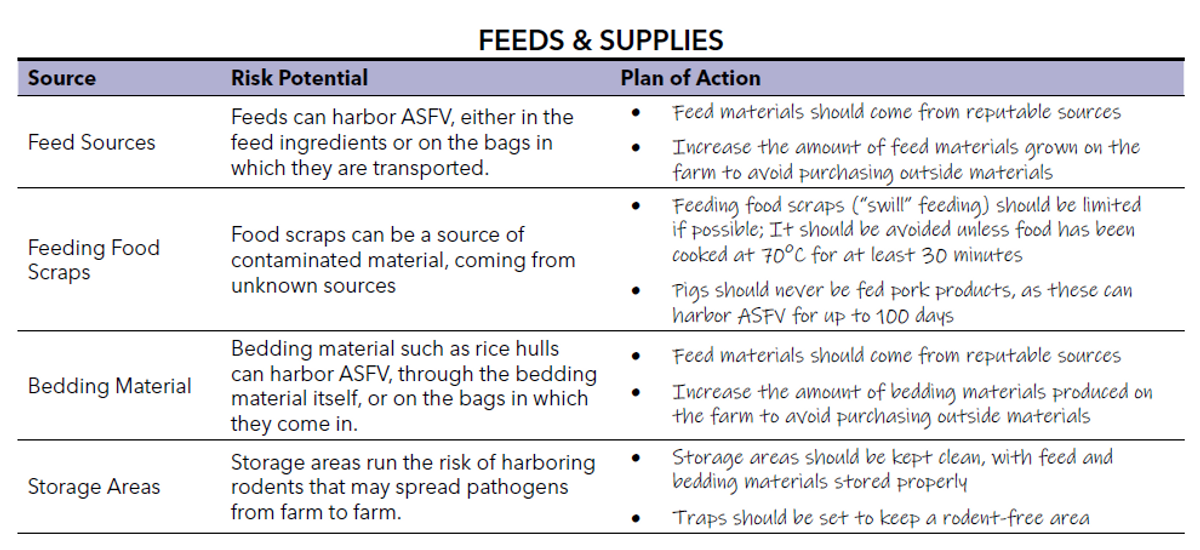[Editor’s Note: This is only one example of a biosecurity plan for small-scale pig operations in one region and may be used as a template. It is unlikely that all measures will be practical or appropriate for your context and should therefore be adapted according to the needs and priorities of your farm. It is recommended that that the adoption of any such farm plan be the result of farm-wide discussions with your team for maximum buy-in, understanding, and practicality.]
Notes:
- Remember that sunlight and dry conditions kill the virus, while shaded and moist conditions allow it to thrive.
- All disinfectants require time to kill ASFV because it is so densely encapsulated (like an onion). The virus is inactivated by high pH and low pH (<4 and >11). Several of the disinfectants are good—they require contact time.
- Various disinfectants are effective: chlorine, iodine, formalin, and caustic soda (lye; NaOH) are all effective. See Disinfectants for Use Against ASFV resource for more information.
- Foot baths are difficult to keep clean and need to be changed daily to remain effective.
- It is recommended (because of cost) that footbaths be filled with a concentrated bleach solution (8 oz per gallon of water) and then have a dry pan of lime to step into with wet boots; both are relatively cheap and will work if kept clean and fresh.
- Vehicle and bicycle tires do not stay in the tire baths long enough to do the trick —and easily become contaminated. If possible, wash tires and then have vehicles drive through dry lime. The lime area needs to be long enough for the whole circumference of the tire to be exposed to the lime.
